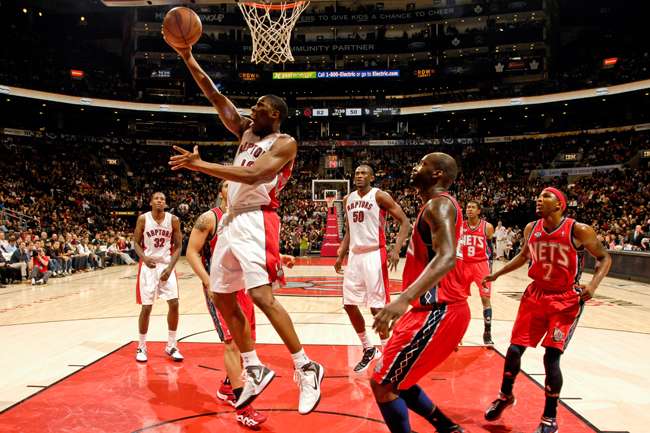When DeMar DeRozan steps onto the court at the New Orleans Arena on Sunday, Feb. 16, it will be the first time in four seasons that the Toronto Raptors will have one of their own players in front of the bright lights on All-Star Sunday. The Raptors—like all other Toronto sports teams since 1993—are a study in disappointment and false hope. This year was supposed to be different. This year we were supposed to be good, yet the squad opened the season with a sluggish 6-12 start.
The wildly inconsistent 18-game stretch was enough to show that the Rudy Gay experiment wasn’t panning out. Masai Ujiri, hired as the Raptors’ general manager this past off-season, took it upon himself to bring change. Cue the night of Dec. 9 when Gay was shipped off to Sacramento, and the Raptors seemed to plunge themselves back into their perpetual state of rebuilding.
At least that’s what they thought. Today, the Raptors are nestled snuggly at the top of the Atlantic Division as the third best team in the Eastern Conference. This hope was glimmering, and it was real. The new-look Raptors are breathing new life into a moribund franchise, and are offering a refreshing brand of basketball that focuses on the simplest of philosophies: ball movement and teamwork. It wasn’t long before the skeptics came out to question whether or not this current group is legitimate, but based on the eye test, this is anything but fool’s gold.
On this team, every player understands his role, and as a unit, the team plays a grind-it-out, unselfish style of basketball. Once under-valued players that came over through the trade are now allowed to play to their strengths and look like solid complementary pieces on a playoff roster. Younger players such as DeRozan and Terrence Ross are taking on more responsibility and are developing without the need to appease Gay’s star cache. Due to their selflessness on offence, the Raptors are trusting each other on the other side of the ball. They are a defensive force that ranks seventh in the league in terms of points allowed per possession—a previously unfathomable achievement.
It may not be a stretch to compare this year’s rendition of Canada’s team to the 2004 NBA Champion Detroit Pistons, but similarities do exist. Neither team had a superstar but still found ways to win by showcasing strong collective play and discipline on both ends of the floor. Point guard Kyle Lowry is the equivalent of 2004’s Chauncey Billups. He’s tough, versatile, clutch, and most importantly has a huge chip on his shoulder after being given up on by so many teams. DeRozan, while not the defender Rip Hamilton was, can create his own shot and has the potential to average 20 points, five rebounds, and five assists a game. Ross has freakish athleticism, which, combined with his length and lateral quickness, can be deployed as a defensive stopper in the mold of Tayshaun Prince. Finally, you have young big men, Amir Johnson and Jonas Valanciunas, both of whom can stretch the floor and are learning to play the same team defence with which Rasheed and Ben Wallace anchored the back line for the Pistons.
The Raptors are structured, focused and poised to make a statement come playoff time. As long as they maintain their potent level of chemistry and play as a team, they should be able to push even the best of teams to seven games. The players are well aware of how they have to continue playing in order to keep the machine running smoothly, but only time will tell if that will happen. As a loyal fan of the franchise since childhood, I certainly hope they can keep it up.
That being said, regardless of where they end up come April, Raptor Nation can finally be proud of the fact that its squad has made significant strides in the right direction. In Year 19, the franchise has finally developed a meaningful identity, and maybe, just maybe, a recipe for long term success.








